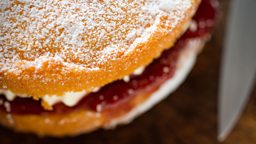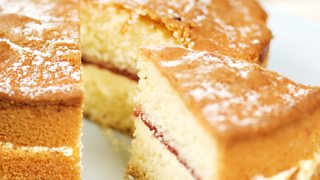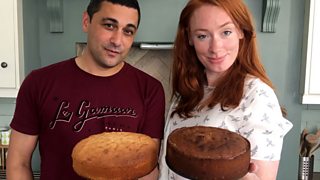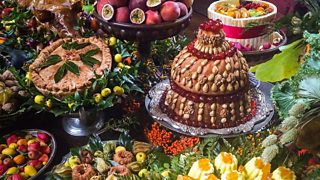How science can help you bake the perfect sponge cake
All cooking is chemistry. But baking in particular depends on a combination of accurate measurement and correct methodology to avoid soggy bottoms or burnt buns.
As we discover in , materials scientist Mark Miodownik has some top tips for creating the perfect sponge...

1. Precision is key
Whereas other types of cooking will benefit from a great deal of experimental freedom, if you want to create the perfect bake then scientific precision is key. Weigh the ingredients carefully, mix them together in the right way and at the right time. Once you’ve found a recipe that works for you, stick to it and don’t deviate too much from the instructions.
2. Believe it’s not butter
Margarine is excellent for baking because of its ability to cream well and absorb lots of air during mixing. Butter can perform well, but make sure it’s at room temperature – if it’s too cold and hard it won’t be able to absorb much air. Hence the popularity of margarine which is always soft.
3. Don’t be chilled
Use room temperature ingredients (between 18-22C) in your cake baking. This is partly about aeration (see above) but also because fats cream better at this temperature. Having the whole batter at room temperature before cooking is also important. Recipes are designed with this in mind, so cooking from chilled will upset the timings.

4. Brown might let you down
White caster sugar is the traditional choice for a Victoria sponge and will give a golden colour. Brown sugars are similar to white, but have molasses in them. This changes the flavour and also weakens the sponge during baking, causing cakes to rise less well. So don’t change the type of sugar specified without adjusting the recipe.
5. Gently does it
When pouring your batter into the tin, treat it gently and with great care. If you bash it about you’ll knock out some of the air bubbles which will stop it from rising fully. You don’t have to smooth the top as it will flow into all parts of the tin during the heating process.
6. Buns in the oven
Place the cake in the middle of the oven where the temperature is most uniform. This will enable all sides of the cake to experience the same temperatures. Fan ovens circulate the hot air to create a uniform oven temperature, so they are best for baking cakes.

7. Flour power
Self-raising flour includes baking powder, which is a raising agent. This is sodium bicarbonate combined with a powered acid (cream of tartar). These react together in the batter to create carbon dioxide, which blows up the air bubbles you created during mixing to produce a foam. Don't substitute self-raising flour for other types such as strong bread flour or your cake will be flat as a pancake.
8. No more soggy bottoms
During baking, as the air bubbles inside the batter expand and the sponge rises, the starch walls of the bubbles become thinner. They have to be strong enough to withstand this expansion, because if they start to pop, the cake will fall. Egg proteins and gluten from the flour strengthen the bubble walls, while the fat and sugar weaken them. So it’s vital to get the right balance between these elements to achieve both a good rise and a delicate sweet crumb. To check this has happened, press lightly on the top of the cake. If it springs back then next put in a skewer – if this comes out clean, you’re done. If not, cook for a little longer.






















